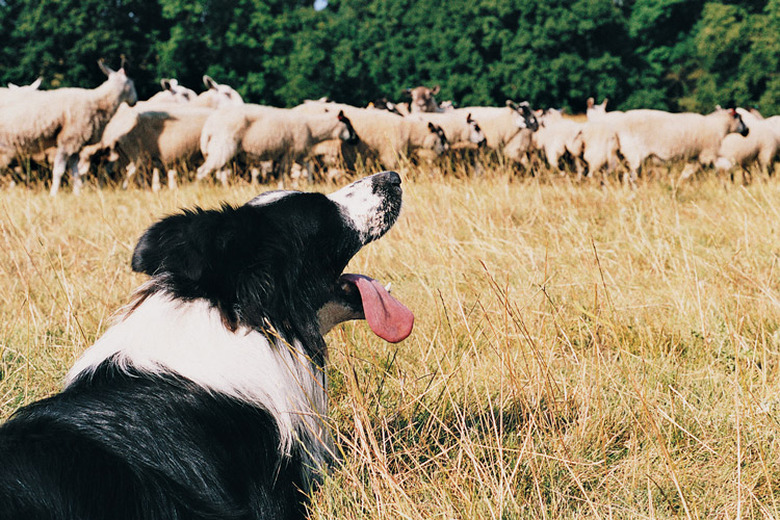How To Stop Your Dog From Herding People
If your dog is constantly poking you and trying to control your movements, he's probably trying to herd you! Though initially funny, it can turn troublesome, fast. This instinctive behavior is common in herding dogs who've been bred for generations to keep other animals in line. To keep your dog from getting more aggressive to the point where he's ripping your clothes and biting you, correct his behavior immediately — ideally when he's a puppy. Understand, this behavior comes naturally to herding dogs and it might be hard to completely get rid of the instinct, but by prioritizing obedience training and redirecting your dog's attention you can accomplish a lot.
Tip #1 - Stay calm the moment your dog starts pushing you around. Avoid laughing, running away or yelling at him, because this reinforces the behavior — your pet companion might think you're playing a game with him.
Tip #2 - Leash your dog when you walk him until you're confident you've got his herding behavior under control. The leash will allow you to maintain control over your furry friend so he can't take off and start chasing and herding people or animals.
Tip #3 - Enforce obedience training so you can control your dog's actions. Teach him basic commands, such as "sit" and "stay," and also teach him "hold" to stop your dog in his tracks. To do this, walk your dog in an area free of distractions. Gently pull the leash, say "hold" and wait until your furry friend stops walking. When he does, give dog treats and praise, and repeat this training tactic several times. Practice the command with a herding temptation nearby and progress to removing the leash when he starts understanding the command. When he doesn't obey, order him to "sit" and say "no herding," and continue the training.
Tip #4 - Provide your dog with other ways to satisfy his urge to herd. Play games, such as fetch and tug. During fetch, command your dog to "sit" before throwing the ball. This teaches him self-control and satisfies his urge to chase moving things. Tug gives your dog's mouth a workout and provides him with an outlet to bite and nip.
Tip #5 - Spice up your dog's life to keep him busy and entertained so he's less likely to resort to herding. Provide mental stimulation in the form of food-stuffed dog toys and daily obedience-training sessions with rewards for good behavior. Set up doggie play dates so your pet companion meets other people and dogs and can improve his socializing skills. Take your dog on walks for physical stimulation — bring him along on your jog or allow him to swim so he burns energy that he might otherwise use to herd.
The Herding Group
The AKC lists the following 29 breeds as part of the Herding Group:
Australian Cattle Dog
Australian Shepherd
Bearded Collie
Beauceron
Belgian Malinois
Belgian Sheepdog
Belgian Tervuren
Bergamasco
Border Collie
Bouvier Des Flandres
Briard
Canaan Dog
Cardigan Welsh Corgi
Collie
Entlebucher Mountain Dog
Finnish Lapphund
German Shepherd
Icelandic Sheepdog
Norwegian Buhund
Old English Sheepdog
Pembroke Welsh Corgi
Polish Lowland Sheepdog
Puli
Pyrenean Shepherd
Shetland Sheepdog
Spanish Water Dog
Swedish Vallhund
Berger Picard
MIniature American Shepherd
By Kimberly Caines
About the Author
Kimberly Caines is a well traveled model, writer and licensed physical fitness trainer who was first published in 1997. Her work has appeared in the Dutch newspaper "De Overschiese Krant" and on various websites. Caines holds a degree in journalism from Mercurius College in Holland and is writing her first novel.
